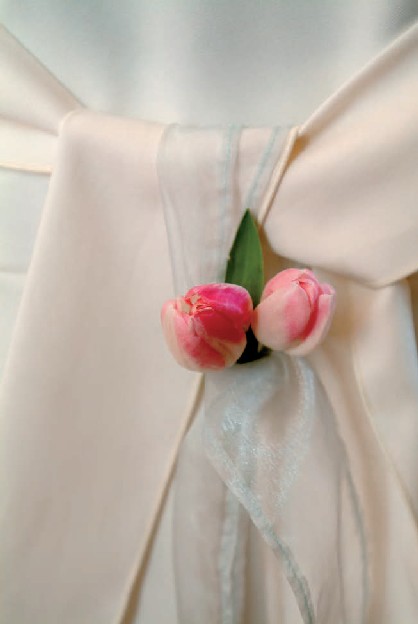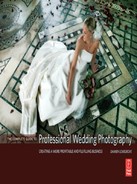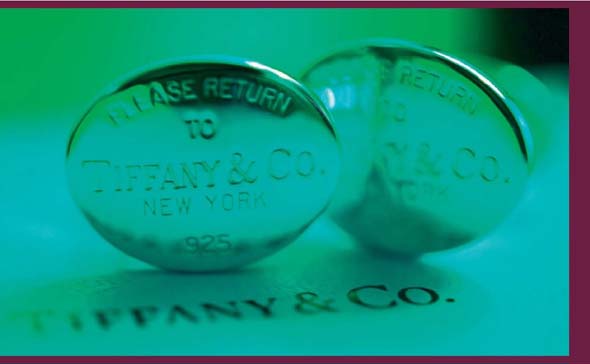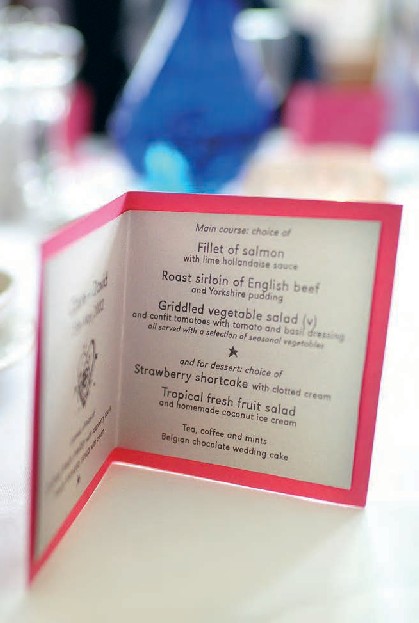TIP HEALTH WARNING! - Getting to grips with bookkeeping, spreadsheets, profit and loss forecasting, tax returns, VAT, salaries and general accounting is one of the least liked elements of running a successful photography business. However, ignoring or playing down these matters could seriously damage the financial health of your business! So please persist. It has to be done and once you understand what’s needed, you will find chasing the profit both creative and rewarding.
In this chapter I reveal how we did it – how the financial side of Lovegrove Weddings climbed from deep in the red to very healthy profits in just a few seasons. The fact is that you could get everything else right – the photography, the service, the presentation, even the marketing – but without financial plans, analysis, controls, and strategies, you could still be struggling to make ends meet.
So first off, do yourself a favor and get decent bookkeeping software package from day one. Choose a system that’s easy to use, delivers powerful reporting, and can be upgraded as your company grows. Befo re making the purchase, you should also make sure that the person putting together your end-of-year accounts is familiar with the software you have chosen.
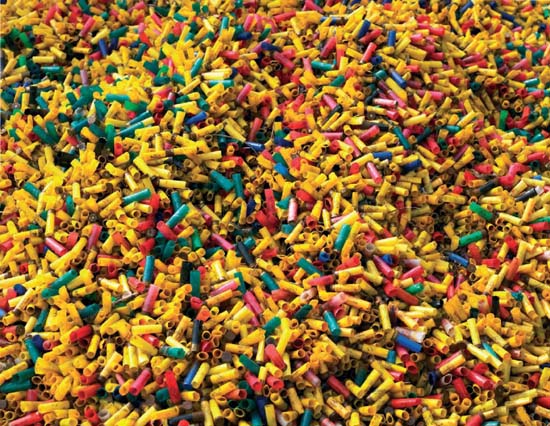
Fig. 2 ISO 100 at f/8 at 1/90th
I saw this pile of used twelve-bore shotgun cartridges at a morning shoot with the guys and I just had to get a picture. Keep your eyes open for details; this picture made the album.
TIP ACCOUNTING PACK AGES – Here are a couple to consider:
’QuickBooks’ works well for businesses with up to £5M turnover and 20 staff. It also ‘holds your hand’ while you get started.
’Sage’ is ‘the accountant’s friend’ and also works well, but for the inexperienced is less user-friendly.
When drawing up your financial plan, set out your costs and income in both an individual job basis and a season-to-season basis. You can scale up the individual job figures to build a picture of the season and you can call upon the fixed cost data for the season to create the individual job figures. Juggling figures until a financial plan is achieved is a very necessary part of the business. This financial mastery doesn’t come naturally to most photographer s so don’t skip this chapter because it looks scary. It’s like a lot of difficult-looking things; once you get into them, you’ll wonder why you were ever worried.
Let’s look at the figures for a typical wedding.

Figs 3–7 ISO 200 f/4 at 1/500th and ISO 200 f/4 at 1/180th
It’s great fun to set up a sequence like this. I shot the underwater pictures through a small window in the side of the pool.

This bride had a novel pair of boots for her wedding day. This picture of Julie’s captures the spirit in which they are worn.
Direct expenses
| Cost of acquisition, advertising, etc. | £250 |
| Hospitality at enquiry and planning meetings | £20 |
| Suit dry cleaning | £20 |
| Travel expenses, 60 miles @ £0.40 | £24 |
| Photographic consumables, batteries, etc. | £5 |
| Album | £300 |
| Prints | £100 |
| Total direct expenses per wedding | £719 |
Indirect expenses :
These are often calculated as a percentage of the annual charges. For instance, if you photograph 40 weddings a year and no portraits the annual charges can be divided by 40 for each item below.
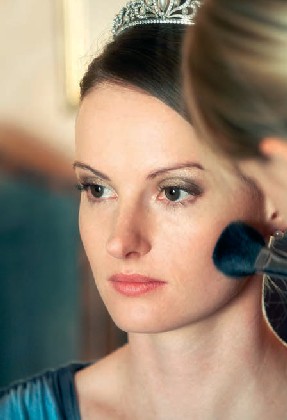
Simple close-up details of the make-up session are always worth capturing. Wait until the end to capture the finishing touches and radiant beauty.
| Business premises rent, rates, etc. | £100 |
| Electricity, gas, water, etc | £50 |
| Accounting services | £20 |
| Insurance | £25 |
| Memberships | £3 |
| Camera equipment depreciation | £80 |
| Computer and business equipment depreciation | £50 |
| Telephone and broadband | £710 |
| Interest on loans | £25 |
| Total indirect expenses | £363 |
| Total expenses | £1082 |
| Income @ £2000 less VAT | £1650 |
| Expenses | £1082 |
| Profit/pre tax income per wedding | £568 |
| Annual profi t (40 weddings) | £22,720 |
Be as accurate as you can when setting out these figures. Even a slight optimism can result in an error of more than 10% and that might just mean the difference between being able to pay the mortgage or not.
Using the above figures, each wedding has a profit of £568 for an income of £1650 (£2000 less the vat). That shows a profit margin of nearly 35%. This is typical of a healthy business.

Julie shot into sunlight to capture this beautiful profile shot of a bride.
BUSINESS MULTIPLIERS {very important stuff}
Price increase
Let’s look at the effect of increasing prices by 10% on the previous model. The income from each wedding will now be£1826 (£2200 less the vat), minus expenses at £1082 leaving a profit of £744. This has taken the profit margin up to 40% from 35%. If you still shoot 40 weddings, you will make a profit of £29,760. This is an increase of £7040 or a whopping30% on the pre-increase figures. You could choose to shoot less weddings of course, because now you only need to shoot33 weddings instead of 40 to get the same profit of £22,720.
(Complicated maths is required to compute this result, involving redistribution of fixed costs over less weddings etc.)
Cutting costs
Reducing expenditure is the most effective way to increase profit without having to add value to your product. Every pound or dollar you save goes straight to the bottom line as profit. Working on our original 35% profit margin, a saving of £100 has the same effect on profit as an increase of sales of £286. Fixed expenditure is the most obvious to challenge first as it doesn’t affect product quality. When you are convinced your power, communications, vehicle running costs, and the like are as low as they can be, turn your attention to your direct costs. Warning! Don’t squeeze your suppliers too hard because you need them as part of your team.
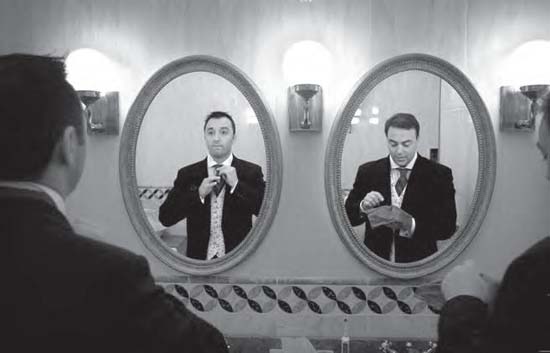
Fig. 11 ISO 800 f/2.8 at 1/100th
Two mirrors, a groom, a best man, and a photographer make up this shot. I was careful not to see my reflection in the mirrors.
The process of juggling figures should continue until you have a workable solution. If you have to increase your fees you will also have to increase the value in your product. You can do this by including pictures at a higher resolution perhaps or extending the coverage you provide on the wedding day. Be creative and get it right from the start.
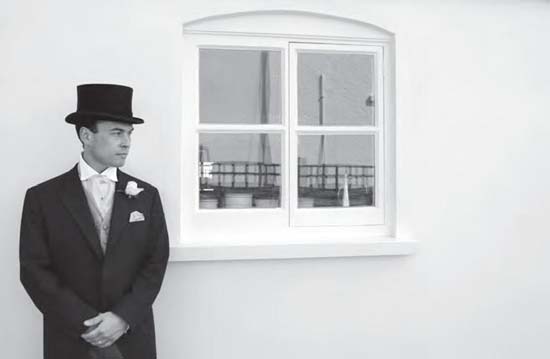
Fig. 12 ISO 400 f/4 at 1/2000th
Simple elegance and contrast make this picture of the groom at his home before the wedding leap off the page.
Creating a pricing policy
When Julie and I made a step change in our pricing structure in 1999, we found that the leads generated by referral couldn’t afford our newly hiked prices. It was hard to justify the price increase to these new leads and as a result we were literally starting from scratch. Because of this experience we have only made one other step change in our pricing strategy since. A big change in price band will result in losing venues, referrals, and the recommendation of associates – florists, dress designers, wedding planners, and so on. You will have to court the attention of new suppliers at the next level up and this is where the competition really starts. It is not uncommon to have 12 photographers or more actively seeking to photograph weddings at a single top venue at the same time. The venue managers and in-house coordinators are only going to recommend the best photographers or, as I have found in some cases, the ones who literally buy their way in.
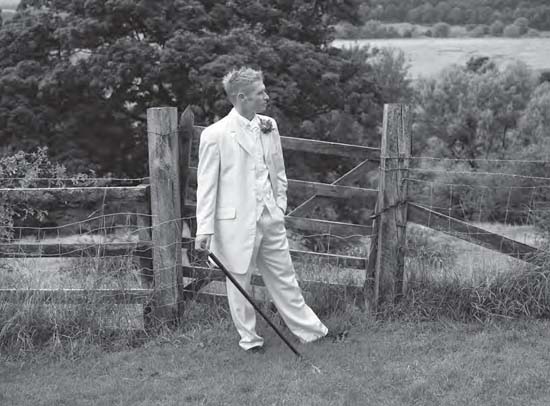
Fig. 13 ISO 400 f/7 at 1/400th
I placed this groom against a dark background and included a rustic gate in the composition. The cane was a great accessory to the groom’s pose.
The alternative to a step change price increase is to use an evolving strategy with a far more stealthy approach. Confectionary manufacturers are masters of this. The chocolate bar gets just a bit smaller while the price stays the same, then it gets smalleragain six months later, again without a price increase, then it goes back to just above its original size and becomes the ‘new bigger bar’ and incorporates the all important price increase of up to20%. The important lesson here is you cannot increase price without adding value. The two go hand in hand.
So here’s an example of a stealthy evolutionary price increase strategy to give maximum growth while retaining the best referral opportunities until the brand value really kicks in during seasons 4 and 5. This relies on the photographer gaining experience and shooting more pictures that sell each year as a result. It also relies on an investment of effort in brand building and other marketing activities.
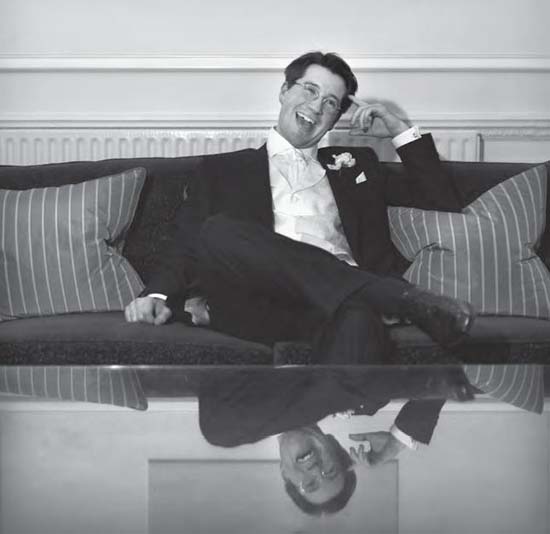
I love using reflections from glass-topped tables in my portraits. I created a moment of fun and captured it with off-camera flash.
Season 1 : £2000 to include an album and the first 75 pictures, extras at £20 each.
Assuming an average sale of 100 prints, the total sale value is£2500.
Season 2 : £2250 to include an album and the first 75 pictures, extras at £22 each.
Assuming an average sale of 140 prints, the total sale value is£3680 – a 47% increase on Season 1.
Season 3 : £2500 to include an album and the first 50 pictures, extras at £25 each.
Assuming an average sale of 150 prints, the total sale value is£5000 – a 36% increase on Season 2 and a 100% increase onSeason 1.
Season 4 : £3950 to include a luxury album and the first 100 pictures, extras at £30 each.
Assuming an average sale of 160 prints, the total sale value is£5750 – a 15% increase on Season 3 and a 130% increase onSeason 1.
Season 5 : £5000 to include a luxury album, the first 75 pictures and a CD of the album, images at high resolution, extras at £35 each.
Assuming an average sale of 180 prints, the total sale value is£8765 – a 52% increase on Season 4 and a 250% increase onSeason 1.
If you are going through growth, change, or are at the foot of the learning curve, it is a good idea to set your ideal targets in this way. Plan for your career progression. Plan a pricing policy for the next four or five seasons. The numbers will be different to those shown above but have an idea of where you are going, otherwise you may never get there. TIP: Don’t spend 15 years getting to the top, do it in 3 or 5 at the most.
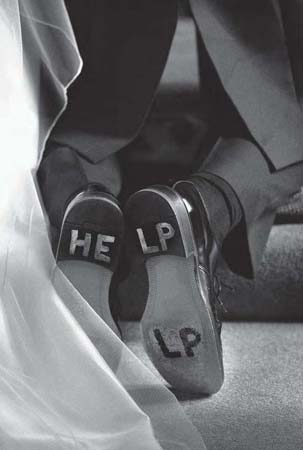
Fig. 15 ISO 1600 f/2.8 at 1/60th
I was in on the plot to decorate the groom’s shoes; so when the time came I was poised to capture this classic shot. I expected to see this sort of prank on a regular basis but it has only happened once in my first 300 weddings. This kind of picture has a wide commercial appeal.
SETTING YOUR PRICE: HOW MUCH CAN YOU CHARGE?
Sometimes it’s hard to quantify value. Customer service, brand position, risk reversal, trust, rapport, and fun factor are all foggy areas that go into the equation of perceived value. Add to these the subjective quality of photography, albums, and presentation and you can see how hard it is to set a price. I have often heard photographers asking, ‘How can the Lovegroves justify such high prices? I use the same albums, the same lab, the same cameras and consider myself to be just as good a photographer….’ Perhaps those photographers fail to see the value of a brand, the value in our customer experience and the fine detail touches we put into our product. Examples of product value reflecting price can be found all around us. Two car manufacturers might use similar amounts of materials to make their products, have similar manufacturing tolerances, similar R&D costs, yet their products could sell for vastly different prices. These differences can often be justified by such things as ‘feel good factor,’ pride of ownership, reliability, value retention, brand position, after sales service, and so on. Let’s look at the factors that affect value more closely.

Fig. 16 ISO 400 f/4 at 1/1500th
Shooting into the light at moments like this highlights the petals. I held the camera above my head to get a top shot perspective.
PRODUCT QUALITY
The quality of your photography, post production, printing, and album preparation are the most obvious things that come to mind when discussing product quality. There are however many other factors to consider. What coverage do you offer on the wedding day? What level of support and advice do you deliver before the wedding? How professional is your website? Are your letters and correspondence nicely printed, personally signed, and delivered in handmade envelopes? Do you wear sharp suits on the wedding day? Is your car cool and always clean? What image are your clients buying into? These are all questions that you need to ask to assess a price point for your work. There are hidden factors too. Do you offer a written guarantee? Do you have a full backup camera kit including lenses? Do you have a contingency plan in case you are ill or break a leg? Remember you are only as good as your weakest link. Keep everything in balance and it becomes easier to set a high price point.
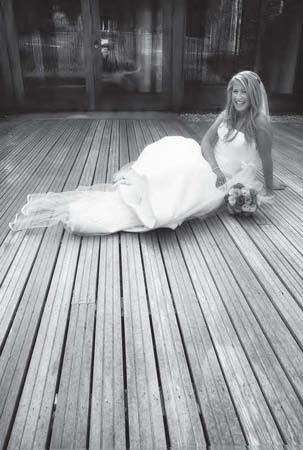
Fig. 17 ISO 400 f/14 at 1/160th
This decking provides great lead-in lines to the bride. She is sitting on the piece of veil fabric that Julie keeps in her camera bag for just this kind of thing.
MARKET AND COMPETITION
The other most obvious factors that affect how much you can charge are the marketplace and your competition.
Get to know the marketplace you are trading in. How much are your ideal clients prepared to pay for the right wedding photographers? How many potential clients are getting married in this price band each year? Ask the key venues how many weddings they have got booked. Find out what photographers are shooting the weddings. These photographers are your competition. When a new venue comes on the scene, get in there. A new emerging market is easy pickings for a new emerging photographer fizzing with enthusiasm.
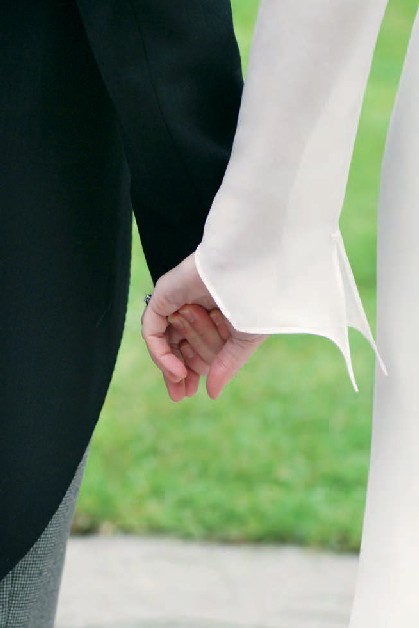
We always take shots like this if the opportunity allows. This picture has since been used by a greetings card company.
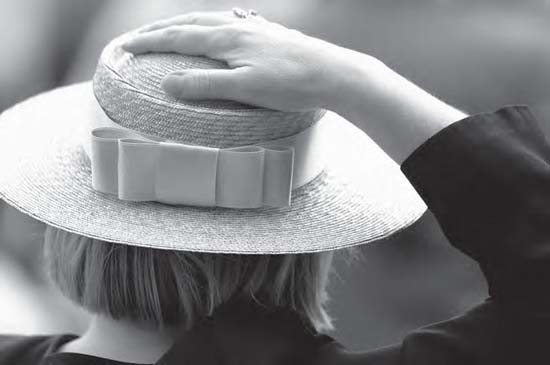
Fig. 1 9 ISO 800 f/4 at 1/850th
When the wind blows pictures like this happen. This is a great picture to help set the scene and compliment the main story in a wedding album.
Know everything there is to know about your competition. What do they do that you could do better? What are your unique selling points? If they are not charging enough for the quality and service they offer, and they are holding you back as a consequence, tell them. Work together on improving the service and quality our profession provides.
Once you have assessed your position in the marketplace and how much added value you offer, you should be able to put a price on your work. So with your product and price set, you can get on raising capital to fund your business.
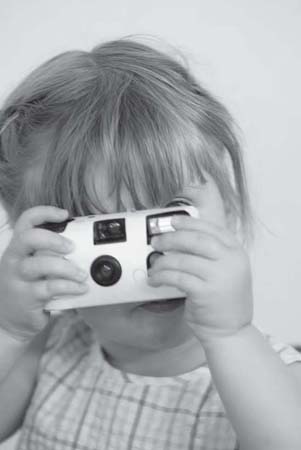
Fig. 20 ISO 1000 f/2.8 at 12/50th
This is the next generation of wedding photographer in the making.
RAISING CAPITAL
Plan your finance needs carefully. Start by putting together a business plan that has a focus on financial forecasting. Get the plan together in a basic form and then question everything. Microsoft Excel is a good tool to use for this purpose. Don’t be too optimistic: realistic forecasting of your profit and loss is vital if you want to attract funding from a bank manager or venture capitalist. Write the plan with the end reader in mind. A bank manager will be looking for security while an investor will be looking for growth.
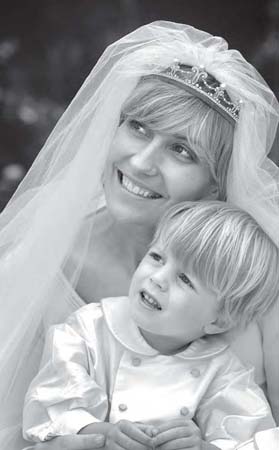
Fig. 21 ISO 400 f/4 at 1/1200th
A beautiful bride and a pageboy attired for a traditional English wedding.
Your borrowing options will often be determined by your business plan. Use the figures you have worked out for a typical wedding and map them out on a timeline. Work two complete seasons ahead. For the moment you will have to guess how many weddings to enter for each month in turn. The number you enter will be the target for your marketing so do keep it achievable. Next enter your direct and indirect costs. Finally, enter your income each month bearing in mind that each job may have a split payment of deposit, fees, and extra sales. These payments will need to be shown in the corresponding months they are to be made.
Julie once asked, ‘How overdrawn are we going to get before you go back to the BBC with cap in hand?’ At that time we had a £40,000 overdraft and we were in a still worsening position.
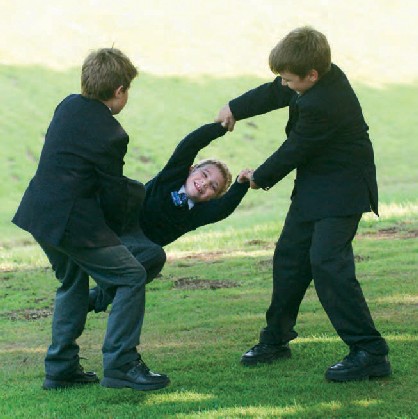
Fig. 22 ISO 400 f/4 at 1/500th
Boys will be boys. This kind of shot celebrates all that is good about boyhood.
Julie and I wrote our first full business plan in 2000. The plan showed an increasing deficit for several more months caused by our training costs, product development, and marketing. All these costs had to be dealt with before a steady income stream developed. We were investing in Jorgensen albums and had to put together some great show products, we were advertising heavily in the main wedding magazines, and we were on a well- structured training program. Apart from these direct costs we had a mortgage, equipment depreciation, and a family to feed. Getting the cycle of income to exceed costs takes time in the wedding photography industry. There is often a whole year delay from the time you invest in marketing and product design to the time the weddings take place and the income starts to flow.
This long delay between sowing the seed and reaping the rewards is risky and not great for cash flow either. Even when we had a pair of great show albums and some effective marketing we still found the delay in the resulting income difficult to deal with. Julie and I thought long and hard and after much deliberation and consultation with other photographers we came up with a pretty good solution. We increased our deposit from £200 to £500. This was all that was needed to turn the business around. Imagine having 20 weddings in the diary for the next season having taken £200 deposits from them all. You will have just £4000 in the bank. With the deposit level at £500 that figure is a whopping £10,000. The difference is enough to fund a continuing marketing and product development program. With a continuous stream of income close to the investment point, the business plan showed far less risk and the bank lent us the start-up capital we needed.
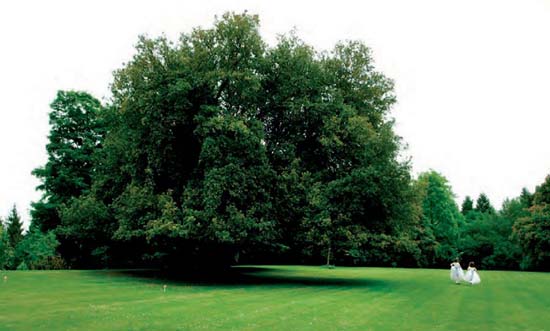
Fig. 23 ISO 800 f/4 at 1/1800th
I took this frame with a wide lens to show the scale and relative size of the girls and the tree. This running away shot captures the fun and freedom the girls are having and triggers childhood memories for the bride.
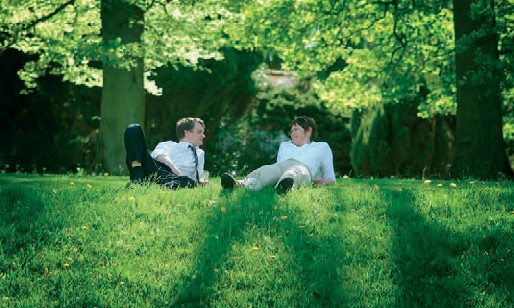
Fig. 24 ISO 320 f/3.4 at 1/1000th
Even the adults take time out to relax away from the main party. This picture sums up the lazy days of summer.
Other forms of borrowing require plenty of research to keep costs and risks at a minimum. Personal credit cards, personal unsecured loans, and loans secured against a property are worth investigating but expose you to high risk. A bank manager shouldn’t lend you money based on a flawed business plan, but without their expert eye on your proposals you run the risk of setting yourself up to fail.
Well done for getting this far. Most photographers would have skipped this chapter. Now you have the edge over them! Read on for a slice of wisdom.
THE PERIL OF DISCOUNTING
Never discount. That’s it! Top advice you should take seriously. Offer extra product if you have to, but never cut the fee. Here’s why: if you have a profit margin of 35% and you offer your clients a 10% discount, you need to shoot 40% more weddings just to make the same profit. Let me put it another way, every £100 sale gives you £35 profit. If you discount by10% your profit margin goes down to 25%. So to make the same £35 profit, you would need to sell £140 worth of product. Discounting is financial madness. Don’t do it.
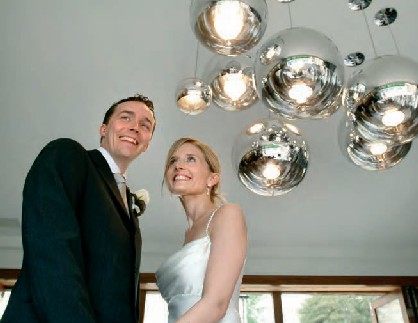
I wanted to include the funky light fittings at the Babington House spa. I shot from a low viewpoint to get the right look while Julie engaged the couple.
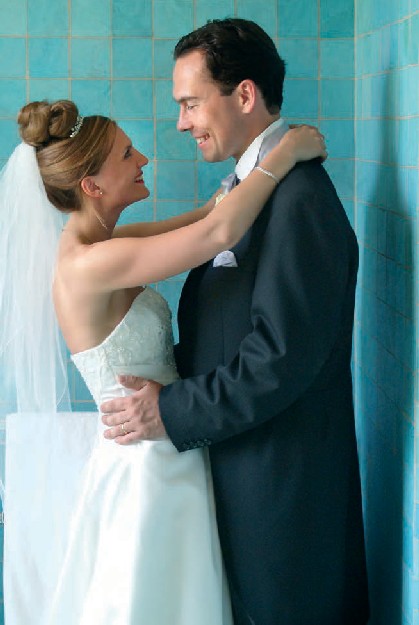
I love the turquoise tiles in this art deco bathroom at Eltham Palace in London. The couple were lit with the natural daylight in the room.
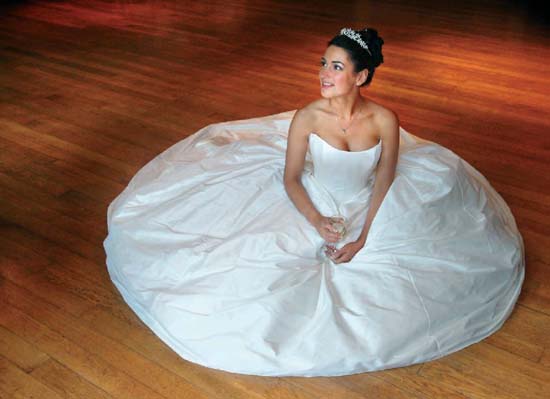
This picture took a bit of setting up. First of all I placed the bride on the ground facing the window. Julie then arranged the dress while I switched on the tungsten room lights and then I took the picture. The bride had asked for this shot and it’s not one we have done since.

Fig. 28 ISO 400 f/5.6 at 1/300th
We passed this hay barn en route from the ceremony to the reception. I just had to get this picture. I shot into the unlit side of the bride’s face and the groom created the reaction.
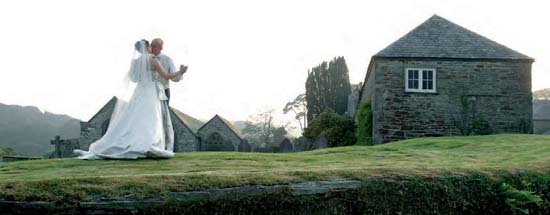
Fig. 29 ISO 400 f/4.8 at 1/350th
I have always explored different viewpoints and the best pictures I make are rarely taken from eye height. Here the bride and groom are practicing their first dance while their guests finish dinner.

Fig. 30 ISO 800 f/4 at 1/500th
I like fire, and where I can get it in the pictures I will. The portcullis makes a dramatic backdrop.
